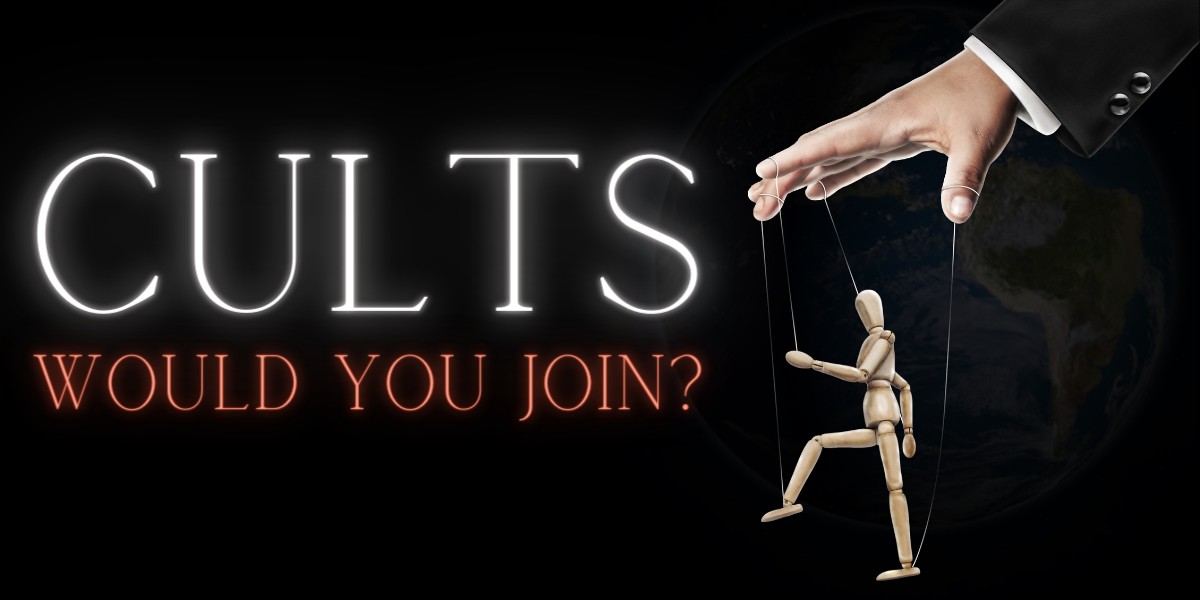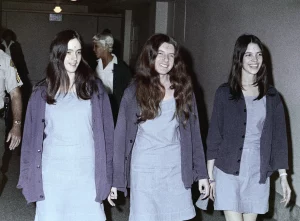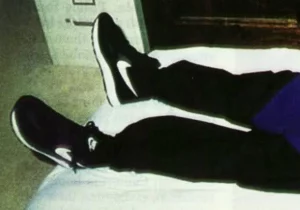By: Andrea Cipriano, MAFP
The answer might surprise you.

Charles Manson and “Helter Skelter.” Heaven’s Gate and “Nike sneakers.” Jim Jones and “Flavor-aid.”
Some cults are so infamous that their tragedies — and their unique details — stay with us forever. But they’re notorious for a reason. Most people look at cults from the outside and wonder, how did anyone join and not see the red flags?
Unfortunately, there are logical reasons why someone would be vulnerable to joining a cult. It could be anyone.
What is a cult?
A cult is a social group typically defined by its religious, spiritual, or philosophical beliefs that appear extreme to others. Cults are hallmarked by an organization’s shared interest in a particular personality, object, or goal.
The people in the denominations are often led by a single individual, known as a cult leader, who exerts a powerful influence over members and demands ultimate commitment…sometimes even death.
Why would someone join a cult?

Susan Atkins, Patricia Krenwinkel, and Leslie Van Houten were female disciples of Charles Manson — dubbed The Manson Girls — who participated in the killing spree.
People join cults for a variety of reasons. Some may seek a sense of community or belonging, while others may search for answers to profound spiritual or philosophical questions. Anyone seeking stability could also be drawn to the perceived power or charisma of the cult leader, while others may be seeking to escape from personal or societal problems.
Therapist Rachel Bernstein, who treats former cult members, says there isn’t one profile or set of traits that make someone susceptible. Rather, it’s a mixture of desires and personal timing.
It’s important to note that most people who join cults don’t often know that’s what they’re doing. Instead, many of them simply believe they’ve found people who understand them or offer a sense of certainty in the world.
There’s never a neon sign that says, “This is a cult!” It’s a psychological feeling.
Since it’s a feeling, here are five psychological factors that would make someone vulnerable to joining a cult.
-
They lack a sense of purpose or direction in life — and are looking for one.
-
They have low self-esteem or self-worth — and are looking for validation and personal development.
-
They recently experienced a personal loss, such as a death of a loved one or the end of a relationship — and are looking for deep connection.
-
They generally feel isolated — and are looking for community.
-
They feel spiritually lost — and are looking for signs or something greater than themself.
However, despite the initial attraction that fills someone’s needs, cults can be extremely dangerous. Cult leaders often use manipulation and control tactics to maintain power over their followers, such as isolating them from friends and family, controlling their access to information, and demanding complete loyalty and obedience.
Cult members may be subjected to physical, emotional, and sexual abuse. They’re often coerced into participating in activities they would not otherwise choose, such as donating large amounts of money or even committing criminal acts.
If you suspect someone you know may be involved in a cult, it is essential to approach the situation with sensitivity and understanding. It can be difficult for a cult member to recognize the manipulation and control they are under, and they may be resistant to attempts to intervene. However, providing support, information, and resources can help individuals to make an informed decision about their involvement in the group.
Infamous Cults

Charles Manson, 1994
Most people can immediately envision Charles Manson in their mind when they read about his so-called “family.” The group that once settled in the Spahn Ranch near Los Angeles frequently took drugs and participated in mandated orgies while Manson fed them ideals about an imminent race war.
Manson orchestrated the killing spree of a Beverly Hills home where five people, including actress Sharon Tate, lost their lives.
Even though Manson never set foot in the house, his untethered influence on the young people in his family earned him his first-degree murder conviction in 1971.
Instead of sex and drugs, Marshall Applewhite gained the trust of many with his rendition of a biblical prophecy that argued once a person rejected their human nature, they would ascend to heaven as an extraterrestrial being.

The infamous Nike shoes worn at the Heaven’s Gate mass suicide.
After roughly seven years, the group reached a population of a few hundred. Then, coinciding with the closest approach of Comet Hale-Bopp in 1997, Applewhite persuaded a select group of 39 people into a mass suicide. He said that following the comment was a spacecraft that would be “the only way to evacuate this Earth,” and it would represent the “closure to Heaven’s Gate.”
All 39 were dressed in identical black shirts and sweat pants, brand new black-and-white Nike Decades athletic shoes, and armband patches reading “Heaven’s Gate Away Team.”
Most alarmingly is the massacre at Jonestown.
In 1955, Jim Jones founded The People’s Temple in Indianapolis, Indiana. Jones grew so paranoid that he moved to San Francisco and then again with his group of hundreds of people overseas to Guyana. The new place was dubbed “Jonestown.”
Over time, Jones’ paranoia and drug use increased. He was so fearful of the government that he would order the nearly 1,000 members to participate in rehearsed mass suicide events and ad hoc evacuations. Ultimately, on November 18, 1978, Jones called in all the members inside their pavilion where one by one, each person drank grape Flavor-aid that was poisoned with cyanide.

The poison and grape Flavor-aid discovered in the wake of the Jonestown massacre.
His persuasion was dangerous.
Only a few people survived. Escaped Temple member Odell Rhodes volunteered to fetch a stethoscope but hid in a building’s basement. Grover Davis, 79, was hearing impaired and missed the announcement to assemble. He pretended to be dead. Hyacinth Trash, 76, realized what was happening, crawled under her bed, and waited until it was all over.
Up until the September 11, 2001 attacks in New York City, the tragedy in Jonestown represented the largest number of American civilian casualties in a single non-natural event.
Ultimately, no one type of person is prone to become involved with cults. But, at the wrong time with the wrong circumstances, someone’s own vulnerability could be surprising.
